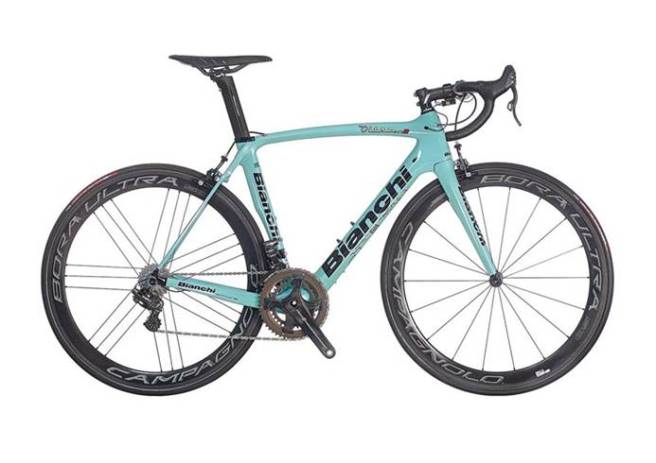A good friend of mine (let’s call him Tony, seeing that’s his name) has recently completed his first sprint distance triathlon.
A few weeks on and he’s ready to buy his first triathlon bike, so he turned to twitter for two sources of advice on his impending purchase, by asking me, and arguably the best triathlete in the world “which bike would you recommend, without needing to re-mortgage?”.
He has a response from both of us but rather embarrassingly, I was slower to respond!
Obviously, there are a number of considerations when selecting a triathlon bike. The first consideration perhaps, is what do you have already?
Tony borrowed a bike to race on, as he doesn’t yet own a bike at all. Utility then, for both training and racing, has to be a consideration.
I confessed to Tony in my initial twitter reply, that I’m a Trek man. So it’s too easy to just say “buy a Speed Concept.” Even though I love mine, I can’t hand on heart recommend it to someone who learned their bike handling skills by cycling on sidewalks on a Raleigh Grifter in the 1980s. Of course for the majority of triathlons (there are no expectations of draft-legal ITU races for Tony) a TT bike is certainly the weapon of choice.
What else is there to consider?
Handling? It’s a road bike all day long, unless you’re racing long distances on long straight roads, the TT won’t handle as well for the relative novice.
Race distance? I know Tony. He won’t be content with a sprint or standard distance and before long he’ll be considering a 70.3 or despite his initial denial, an Ironman. Let’s face it, taking up triathlon, as a middle-aged man is a sure sign of a sickness that just won’t leave you alone until you hear the words “You, are an Ironman”. If you have a good bike fit, riding a TT bike can be equally comfortable to a road bike but generally speaking, for overall long distance comfort in training, the road bike geometry generally has the edge. I’m going to call that aspect a score draw.
Terrain – Tony is currently living in the Middle East. Its pancake flat for the most part. Yet more evidence to support the case for a TT bike? Tony does however intend some day to return to UK, where in most parts of the country (East Anglia and Lincolnshire excluded) you can rarely get more than a mile in before meeting some degree of undulation. For climbing a road bike usually wins.
Speed – TT bikes are faster right? Yes, generally they are faster due to the aerodynamics of the frame and more particularly, the rider. All pro and top age group triathletes use a TT bike for all but the hilliest of courses. That said, some road bikes now come with aero frames that perform quite similarly to TT bikes.
Price – Both TT bikes and road bikes can come in at the price of a small family car, so distinguishing them on price isn’t really a fair comparison but certainly at an entry-level, road bikes tend to be a little cheaper and when you consider the relative versatility of a road bike, I’d have to say that the road bike offers slightly better value for money over its task-specific cousin.
Overall, we concluded that set up correctly, the best choice for Tony would be an aero-framed road bike, with clip-on TT bars.
Those of you that read my blog regularly might remember that I don’t do anything bike related without first consulting the bike guru, Mike from Bike Fit . Mike also owns one of the best bike shops in the country, stocking Trek, Bianchi, Boardman and Look to mention but a few and here’s what he said:
“Aero road bikes is definitely where it is at. We do 3 bike runs that solidly fit into this category and one semi-aero that would certainly do the job“:
Trek Madone 9 series £4.5 – £8.5K

Boardman Air £2-£8.5K

Look 795 Light or 795 Aerolight £5K upward

Bianchi Oltre £3-£8k

For readers on the other side of the pond, please don’t call the cops, we in UK are used to paying outrageously over the odds for anything we buy. Bikes are no exception!
It’s difficult to deny the appeal of any of Mike’s suggestions other than the question of affordability.
However, my drawn-out thought process and deferment to Mike’s wisdom, is only one side of the coin. Let’s remember that the first to respond and without a whole lot of fuss, was the world’s best triathlete, who suggested:
“Go to a local bike shop. Don’t be afraid to spend less on a bike and more on fit. I suggest Specialized Venge with bars. Easy to ride”
Specialized Venge (Ultegra) £3k

Given the all round good sense of less on the bike, more on the fit and having access to Mike at Bike Fit it seems that just like going shoe shopping, we’re going to end up buying the one we saw first, before we went all around the mall trying on every other pair!
As for who’s the best triathlete in the world? that’s perhaps a matter of opinion but what isn’t a matter of debate, is that the person I believe to be the best, gives excellent advice.
I’m sure we’ll be hearing more from Tony when he saddles up and rides the Venge!
Paul
GI Tri Coach
